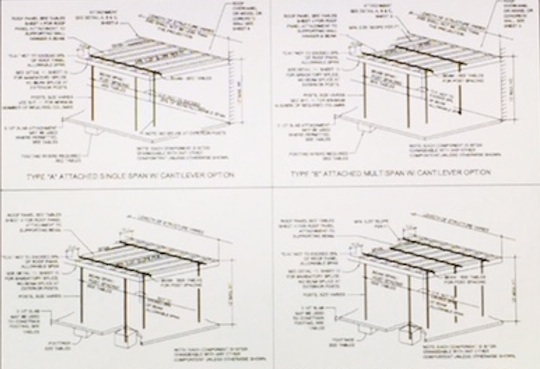Copyright Protection May Be Available for Professional Engineering Plans
Professional engineers (PEs) often work as consultants, rather than employees. If a PE is an employee, then his or her work product will most likely be owned by the employer. If the PE is working as a consultant, there may be a question of who owns the plans. Often PEs think that their PE stamp indicates ownership of the plans, however existing law does not recognize a PE stamp as a claim of ownership. This article examines ways that PEs working as consultants can protect their work product and intellectual property.
In California, PEs are required to have written contracts with clients. The written contract must have a description of the services to be provided, the compensation and other factors. Noticeable absent from this list is any discussion about who will own the plans once the PE produces them.

The simplest way to protect ownership of plans and drawings is to specifically discuss ownership in the contract. The contract may provide that the client owns the work product, or it may provide that the PE is the owner, and may provide for various licensing or other ways to share the plans with the client.
If the contract between a PE working as an independent consultant and a client states that the PE’s work is “work made for hire†then it is clear that the client will own the resulting work product.
Often, however, a contract between a PE and client is silent on the issue of who owns the plans or drawings, and this can lead to a PE losing rights to their work product.
If the contract between the PE and client is silent on the ownership issue, the PE may argue that he or she holds a copyright on the plans, and therefore owns the plans, provided that the plans are for an architectural work, because U.S. copyright law provides protection for defined “architectural worksâ€:
An “architectural work†is the design of a building as embodied in any tangible medium of expression, including a building, architectural plans, or drawings. The work includes the overall form as well as the arrangement and composition of spaces and elements in the design, but does not include individual standard features.
Not all buildings are protected as “architectural worksâ€. To be entitled to protection the plans must be for “humanly habitable structures†that are “permanent and stationary … including but not limited to churches, museums, gazebos, and garden pavilions.†Specifically excluded from protection are “structures other than buildings, such as bridges, cloverleafs, dams, walkways, tents, recreational vehicles, mobile homes, and boats.†37 CFR §202.11(d)(1).
When PE plans are for a protected architectural work, the PE may protect his or her work by placing a copyright notice on the plans. Although US law no longer requires an actual copyright notice to claim a copyright, adding a copyright notice to the plans makes clear that the PE is claiming ownership of the plans. A copyright notice includes the author’s name, the date, and ©.
Summary: Two ways to protect the intellectual property of consulting Professional Engineers: Specifically discuss ownership of the plans in the contract between the PE and client; and/or add a copyright notice to protectable plans for “architectural worksâ€.
